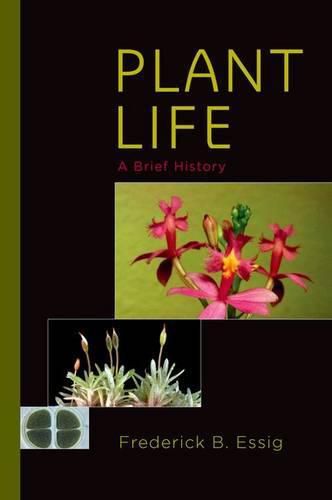Readings Newsletter
Become a Readings Member to make your shopping experience even easier.
Sign in or sign up for free!
You’re not far away from qualifying for FREE standard shipping within Australia
You’ve qualified for FREE standard shipping within Australia
The cart is loading…






Charles Darwin, the father of the theory of evolution, described the evolutionary origin of flowering plants, which appear to have risen abruptly during the late Cretaceous Period, as an abominable mystery. The first seed plants appeared in the fossil record some 230 million years earlier, but the transitions leading to the flowering plants left few fossils and remain obscure. The evolutionary history of photosynthetic organisms is full of mysteries great and small, including the origin of photosynthesis itself, the origins of multiple independent lines of algae, the loss of flagella in the red algae, the origin of sporophytes in vascular and non-vascular plants, the early diversification of seed plants, and the origin of the unique monocots.
In Plant Life: A Brief History, botanist Frederick Essig traces how familiar features of plants evolved sequentially over hundreds of millions of years as various environmental challenges and opportunities were met. This chronological narrative begins with the origin of photosynthesis and the rise of cyanobacteria, continues with the evolution and diversification of photosynthetic eukaryotes and their invasion of dry land, explores the varied adaptations for sexual reproduction and dispersal in the terrestrial environment, and concludes with the diverse growth forms of the flowering plants. As different groups of photosynthetic organisms are introduced, the book emphasizes the adaptations that enabled them to gain dominance in existing habitats or move into new habitats. Readers will acquire a deeper understanding of the diverse photosynthetic organisms humans depend upon for food, oxygen, medicine, building materials, and aesthetic pleasure.With accessible writing and a myriad of figures and illustrations, Essig provides a broad overview of plant evolution that will appeal to students and general audiences alike. Plant Life: A Brief History is a valiant step in the quest to unravel the abominable mysteries of plant evolution, and offers a compelling introduction to the exciting and complex world of evolutionary biology.
$9.00 standard shipping within Australia
FREE standard shipping within Australia for orders over $100.00
Express & International shipping calculated at checkout
Charles Darwin, the father of the theory of evolution, described the evolutionary origin of flowering plants, which appear to have risen abruptly during the late Cretaceous Period, as an abominable mystery. The first seed plants appeared in the fossil record some 230 million years earlier, but the transitions leading to the flowering plants left few fossils and remain obscure. The evolutionary history of photosynthetic organisms is full of mysteries great and small, including the origin of photosynthesis itself, the origins of multiple independent lines of algae, the loss of flagella in the red algae, the origin of sporophytes in vascular and non-vascular plants, the early diversification of seed plants, and the origin of the unique monocots.
In Plant Life: A Brief History, botanist Frederick Essig traces how familiar features of plants evolved sequentially over hundreds of millions of years as various environmental challenges and opportunities were met. This chronological narrative begins with the origin of photosynthesis and the rise of cyanobacteria, continues with the evolution and diversification of photosynthetic eukaryotes and their invasion of dry land, explores the varied adaptations for sexual reproduction and dispersal in the terrestrial environment, and concludes with the diverse growth forms of the flowering plants. As different groups of photosynthetic organisms are introduced, the book emphasizes the adaptations that enabled them to gain dominance in existing habitats or move into new habitats. Readers will acquire a deeper understanding of the diverse photosynthetic organisms humans depend upon for food, oxygen, medicine, building materials, and aesthetic pleasure.With accessible writing and a myriad of figures and illustrations, Essig provides a broad overview of plant evolution that will appeal to students and general audiences alike. Plant Life: A Brief History is a valiant step in the quest to unravel the abominable mysteries of plant evolution, and offers a compelling introduction to the exciting and complex world of evolutionary biology.